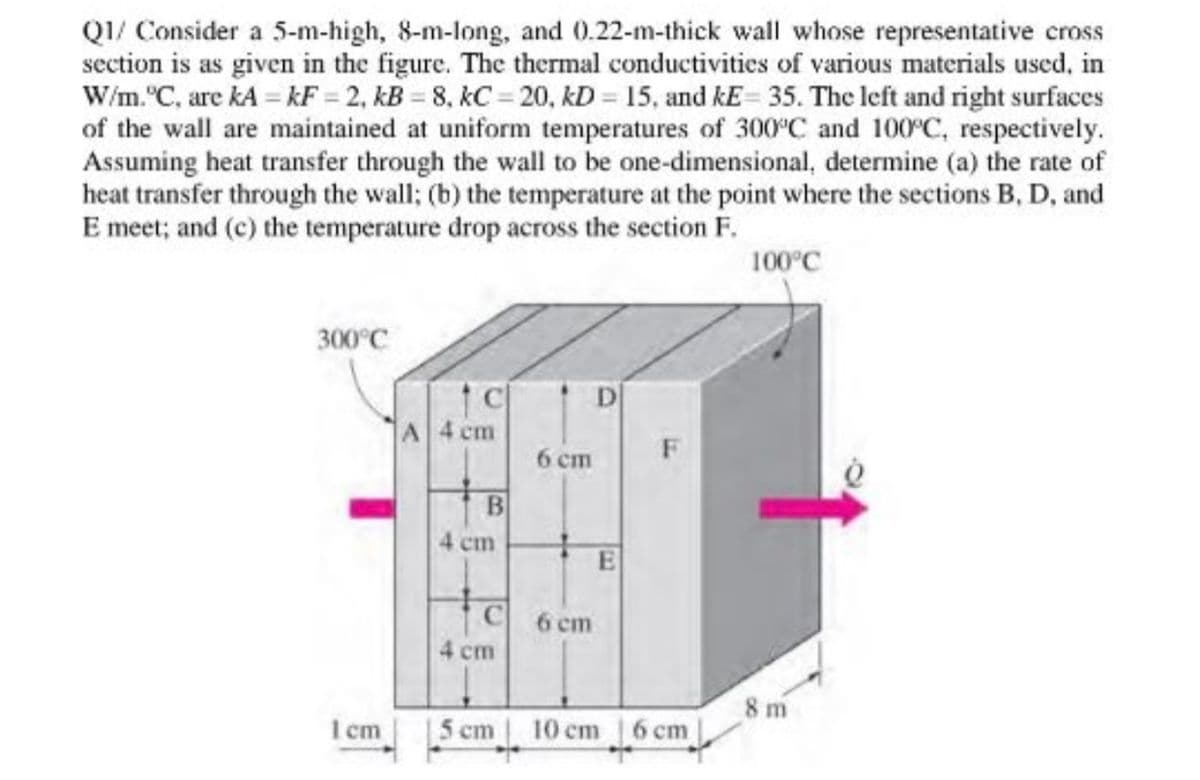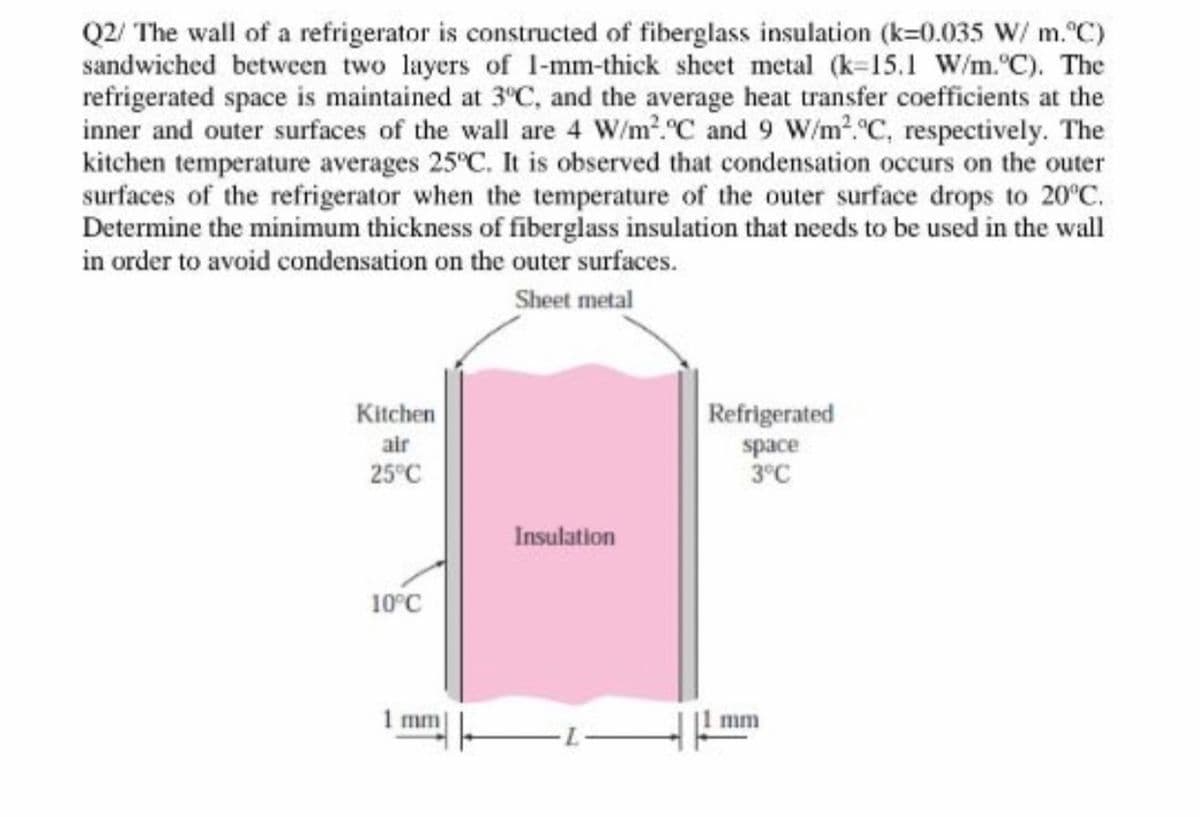QI/ Consider a 5-m-high, 8-m-long, and 0.22-m-thick wall whose representative cross section is as given in the figure. The thermal conductivities of various materials used, in W/m."C, are kA = kF = 2, kB = 8, kC = 20, kD = 15, and kE= 35. The left and right surfaces of the wall are maintained at uniform temperatures of 300°C and 100°C, respectively. Assuming heat transfer through the wall to be one-dimensional, determine (a) the rate of heat transfer through the wall; (b) the temperature at the point where the sections B, D, and E meet; and (c) the temperature drop across the section F.
QI/ Consider a 5-m-high, 8-m-long, and 0.22-m-thick wall whose representative cross section is as given in the figure. The thermal conductivities of various materials used, in W/m."C, are kA = kF = 2, kB = 8, kC = 20, kD = 15, and kE= 35. The left and right surfaces of the wall are maintained at uniform temperatures of 300°C and 100°C, respectively. Assuming heat transfer through the wall to be one-dimensional, determine (a) the rate of heat transfer through the wall; (b) the temperature at the point where the sections B, D, and E meet; and (c) the temperature drop across the section F.
Principles of Heat Transfer (Activate Learning with these NEW titles from Engineering!)
8th Edition
ISBN:9781305387102
Author:Kreith, Frank; Manglik, Raj M.
Publisher:Kreith, Frank; Manglik, Raj M.
Chapter1: Basic Modes Of Heat Transfer
Section: Chapter Questions
Problem 1.18P: The heat transfer coefficient for a gas flowing over a thin float plate 3-m long and 0.3-m wide...
Related questions
Question

Transcribed Image Text:QI/ Consider a 5-m-high, 8-m-long, and 0.22-m-thick wall whose representative cross
section is as given in the figure. The thermal conductivities of various materials used, in
W/m."C, are kA = kF = 2, kB = 8, kC = 20, kD = 15, and kE= 35. The left and right surfaces
of the wall are maintained at uniform temperatures of 300°C and 100°C, respectively.
Assuming heat transfer through the wall to be one-dimensional, determine (a) the rate of
heat transfer through the wall; (b) the temperature at the point where the sections B, D, and
E meet; and (c) the temperature drop across the section F.
100°C
300°C
D
4 cm
6 ст
ст
C
6 cm
4 cm
8 m
1 cm
5 ст 10 ст 16 ст

Transcribed Image Text:Q2/ The wall of a refrigerator is constructed of fiberglass insulation (k=0.035 W/ m. C)
sandwiched between two layers of 1-mm-thick sheet metal (k-15.1 W/m.°C). The
refrigerated space is maintained at 3°C, and the average heat transfer coefficients at the
inner and outer surfaces of the wall are 4 W/m2.C and 9 W/m2.°C, respectively. The
kitchen temperature averages 25°C. It is observed that condensation occurs on the outer
surfaces of the refrigerator when the temperature of the outer surface drops to 20°C.
Determine the minimum thickness of fiberglass insulation that needs to be used in the wall
in order to avoid condensation on the outer surfaces.
Sheet metal
Kitchen
Refrigerated
air
space
3°C
25°C
Insulation
10°C
1 mm
mm
Expert Solution
This question has been solved!
Explore an expertly crafted, step-by-step solution for a thorough understanding of key concepts.
This is a popular solution!
Trending now
This is a popular solution!
Step by step
Solved in 2 steps with 4 images

Knowledge Booster
Learn more about
Need a deep-dive on the concept behind this application? Look no further. Learn more about this topic, mechanical-engineering and related others by exploring similar questions and additional content below.Recommended textbooks for you

Principles of Heat Transfer (Activate Learning wi…
Mechanical Engineering
ISBN:
9781305387102
Author:
Kreith, Frank; Manglik, Raj M.
Publisher:
Cengage Learning

Principles of Heat Transfer (Activate Learning wi…
Mechanical Engineering
ISBN:
9781305387102
Author:
Kreith, Frank; Manglik, Raj M.
Publisher:
Cengage Learning